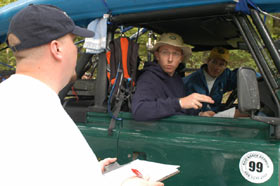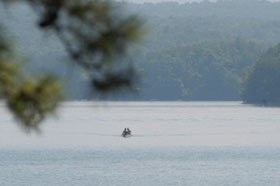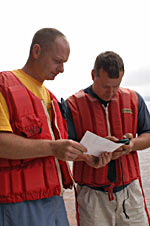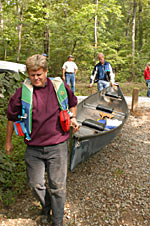|
|
|||||||||||||||
|
It turned out that the Raid North Georgia event is neither a race nor an event exclusive to extreme off-road vehicles. The Raid is a contest that, according to their website at www.raidnorthgeorgia.com will challenge “both person and machine to their limits…navigating through miles of trails, forest roads, leech infested swamps, and haunted forests; sometimes in the dead of night, by compass, with longitude, latitude, and dead reckoning skills by vehicle , by bike, and on foot. Paddling through crocigator [sic] infested lakes. And running up to a dozen special events including: bridge building, paint ball obstacle course, food challenges, etc.” Okay…so maybe the organizers embellished just a little on their website but the event was definitely a blast. The organizer and brainchild of the Raid was Kyle Updegrove. You may have heard of Kyle before. He is the owner of Kennesaw Mountain Accessories Inc.
Kyle, who had been toying with the idea of organizing a new off -road challenge was approached by members of the Nissan Offroad Association of the Southeast. Kyle had participated in several of the previous off-road challenges, so he was already familiar with the event. In addition, as a member of the Georgia Sports Car Club, Kyle has posted four wins already this year. Kyle knows rallies - on and off-road. In addition to being an experienced rally driver, Kyle has participated in adventure racing. When he was designing the Raid he wanted to create a hybrid event - an event that included both adventure racing and rally events. He wanted to have an event where teams would need to get out of their vehicle and be physical (without having to train for months) and one where teams did not need highly specialized, purpose-built vehicles. Almost any 4WD SUV or truck could have successfully participated in the Raid. With the idea of having a hybrid event that would incorporate both rally racing and adventure racing, Kyle chose to borrow from Europeans, who use the term ‘Raid’ to describe both types of events. Thus was born Raid North Georgia. On
to the Raid…
The catch is that no one knows were the destination is located.
The directions read something like this: It was announced that we would meet at 6:30 AM under the pavilion to begin the Raid. Once the drivers’ meeting broke up, most of the teams stuck around for a while - some to simply review the TSD and others to discuss strategy. Teams grouped and bonded to help each other out.
At 6:30 AM, still dark outside, we met again under the pavilion. Organizers gave teams their starting order and handed out the first navigation sheet for the Raid’s first leg. A ‘nav-sheet’ is nothing more than a list of landmarks with GPS coordinates. Each landmark was given a point value. Start time was set for 6 AM and teams were staggered with a five minute buffer.
Stage 1
Since teams were give 185 minutes to accumulate as many points as possible from the ‘nav’ section, we had plenty of time to make our way to the beginning of the canoeing stage. One of the organizers and I had arrived at the beginning of Stage 2 in plenty of time to beat the competitors. Unfortunately, there were no canoes to be found. Oops. The organizers had made arrangements for canoes to be available. Unfortunately, the canoe shop failed to bring the canoes to the event. Fortunately, the organizers scrambled and were able to deliver canoes with minimal delay.
As teams arrived, they
checked-in their time as recorded for Stage 1. They parked
their vehicle, scrambled to grab a canoe,
life vests, and paddles and were given a sheet with two coordinates.
Once they received the coordinates, time started ticking for
Stage 2. Teams quickly plotted the waypoints into their GPS units
and made a mad dash for the water’s edge. It took teams
approximately 1 hour to complete Stage 2.
|
|||||||||||||||
|
Help spread the ROCKCRAWLER world!
Share on Facebook
|
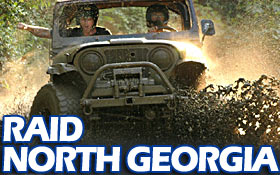
 In 1976, the first
PG rated movie my parents ever let me see at the theater was The Gumball Rally. This was
a hilarious story about a cross country race from New York to
Los Angeles. Those of you a little younger than me can probably
relate to a similar movie entitled Cannonball Run. When I first
heard about the “RAID NORTH GEORGIA” event (aka:
Raid), I had instant flashbacks to those films. Only the Raid would be even better. Rather than contestants
driving Ferrari’s, Lamborghinis, and other exotic sports
cars, teams entered in the Raid would be driving extreme off-road
vehicles – at least that’s what I thought.
In 1976, the first
PG rated movie my parents ever let me see at the theater was The Gumball Rally. This was
a hilarious story about a cross country race from New York to
Los Angeles. Those of you a little younger than me can probably
relate to a similar movie entitled Cannonball Run. When I first
heard about the “RAID NORTH GEORGIA” event (aka:
Raid), I had instant flashbacks to those films. Only the Raid would be even better. Rather than contestants
driving Ferrari’s, Lamborghinis, and other exotic sports
cars, teams entered in the Raid would be driving extreme off-road
vehicles – at least that’s what I thought.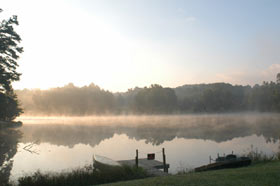 Not too long ago, there were a few different off-road rally events,
including the Tennessee Off Road Challenge, the Safari Triathlon,
and the Southern Off-Road Adventure Rally. Unfortunately, some
of these events were shut down while others simply disappeared.
Regardless, there were no off-road adventure rallies for folks
to participate in.
Not too long ago, there were a few different off-road rally events,
including the Tennessee Off Road Challenge, the Safari Triathlon,
and the Southern Off-Road Adventure Rally. Unfortunately, some
of these events were shut down while others simply disappeared.
Regardless, there were no off-road adventure rallies for folks
to participate in. 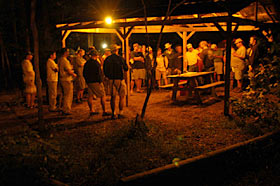
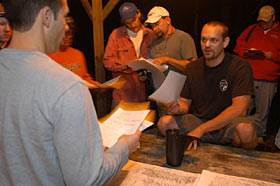
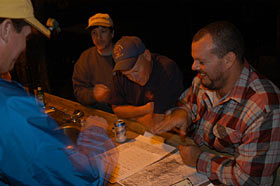
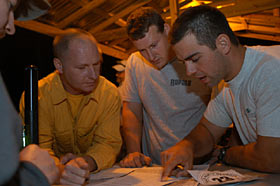
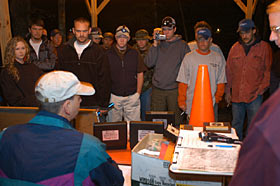
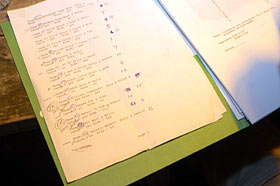
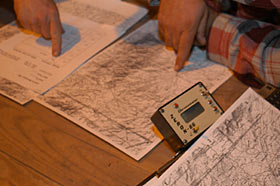
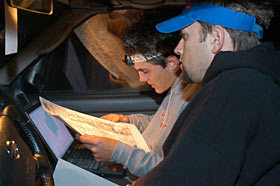
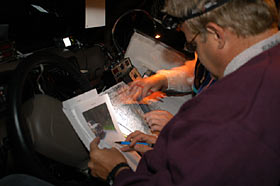
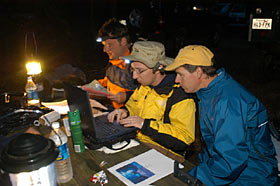
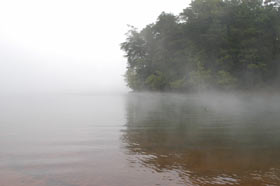 Stage 2
Stage 2